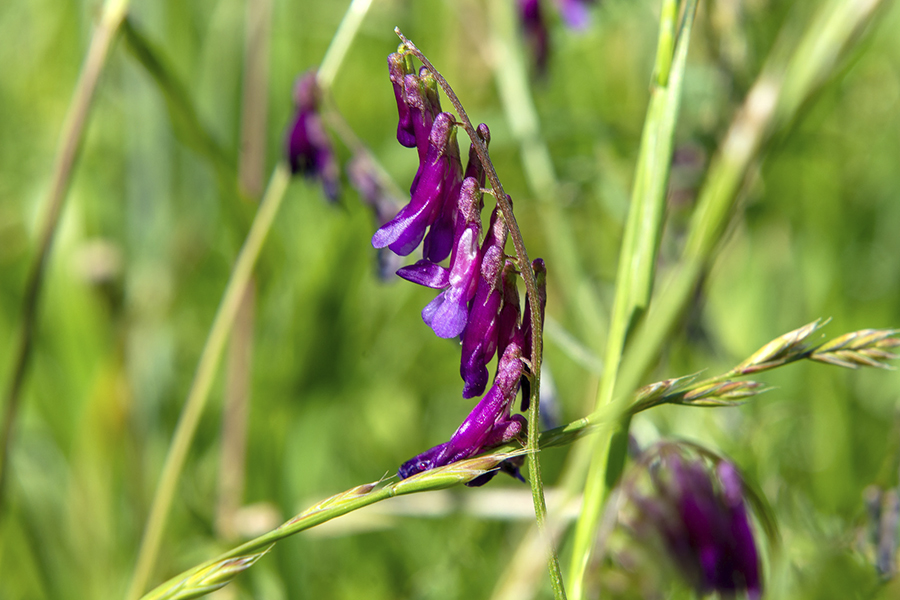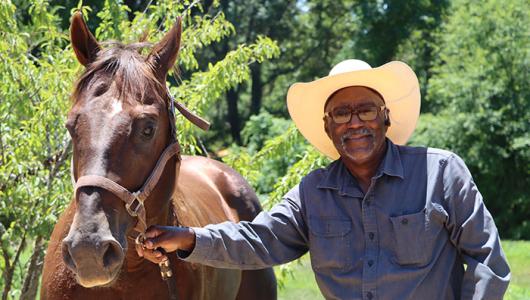Cattle and hay have been at the heart of the Pearson family’s 200-acre ranch for six generations. Shawn Pearson and his brother Cameron Pearson hope assistance from the Natural Resources Conservation Service (NRCS) will help their cow-calf operation transition out of the hay business altogether.
“The ultimate goal is to get into rotational grazing and park the tractor,” Cameron said.
The family started working with NRCS in 2021 to replace an existing flood irrigation system with two center pivot sprinkler systems and irrigation pipeline through the Environmental Quality Incentives Program (EQIP). Now, thanks to an increase in federal funds available through the Inflation Reduction Act, they are implementing cover crops and other conservation practices to increase the health of the soil. On top of the benefits that they provide for soil health and water quality, cover crops can also help to enhance soil carbon storage.
The Inflation Reduction Act provides an additional $19.5 billion for NRCS to deliver financial and technical assistance to producers for mitigation activities through existing USDA conservation programs, like EQIP. When applied appropriately, these activities are expected to reduce greenhouse gas emissions or increase carbon sequestration.
On a bright Thursday morning in September, Cameron and his dad, Clark Pearson, walked through the thick green cover of their lower pasture. Cameron pointed out some of the 16 different species of cover crop that have thrived. Austrian peas and turnips mingled among triticale, wheat, and hairy vetch.

"When we first started putting the seed down, we didn’t till it,” Cameron said, “We wanted to see what we could do to build the soil.”
Before the cover crops were planted, the soil was so compact, rivulets would run with just a half inch of water, causing backwash and erosion. Since then, the soil’s health has improved, including more than a one percent increase in soil organic matter, and the erosion control has made a big difference for the spring and creek running through the field.
“It’s really been something,” Clark said about the changes his sons have spearheaded at the ranch, “The work with NRCS, they’ve been a real blessing to us.”

Last spring, Inflation Reduction Act funding also helped the Pearsons install permanent cross fencing to facilitate a prescribed grazing system. Tree and shrub plantings were also added to create wildlife habitat and a windbreak for the cattle, and seedings for pollinators and wildlife were placed in two of the dry pivot corners of their field. By spring next year, the Pearsons hope to have a trough and water line installed, and then electric fencing to switch to more intensive grazing management. With the changes to their pasture, they came close to grazing year-round last season.
“It’s just been really cool…how we’ve been able to lower inputs and not have that industrial investment all the time,” Cameron said, “Happy soil, happy cows.”

The Pearsons have seen some area producers embrace regenerative agriculture, while others are not ready to ditch the tilling. It was no different for Clark Pearson’s father, Dwain Pearson, a regional director for the Soil Conservation Service during the Dust Bowl.
“He was sent to 17 states to teach and tell about soil health,” Clark said.
The Pearsons have tried to continue that work, talking to their neighbors and other producers about the changes they’ve seen from their conservation efforts.
Cameron recalled a soil structure demonstration he attended where the presenter likened the soil’s ideal consistency to that of cottage cheese or Grape Nuts cereal. Standing in the upper half of the pasture on a sunny Thursday morning, Clark and Cameron inspected the tall mix of grasses, grains, peas, and other species. Cameron pulled out a shovel, took a few steps, stuck the blade into the earth, and kneeled to inspect a chunk of soil. Clark leaned over as his son picked at the clump with his thumb before handing it to his dad with a smile.
“Grape Nuts,” he said.
Sarah Welliver is a public affairs specialist for NRCS in Utah.


